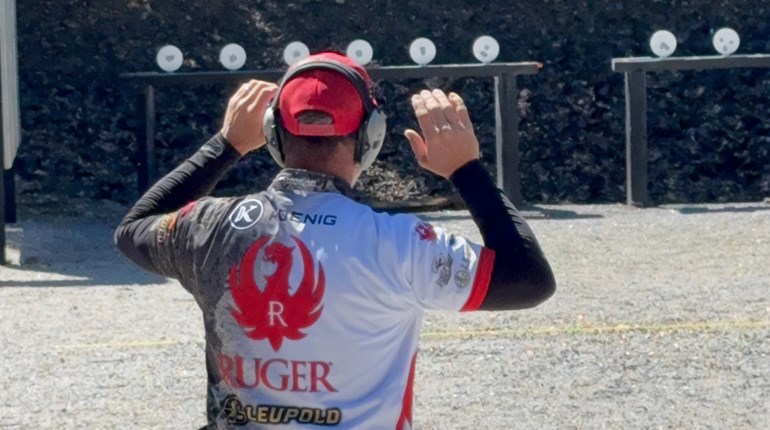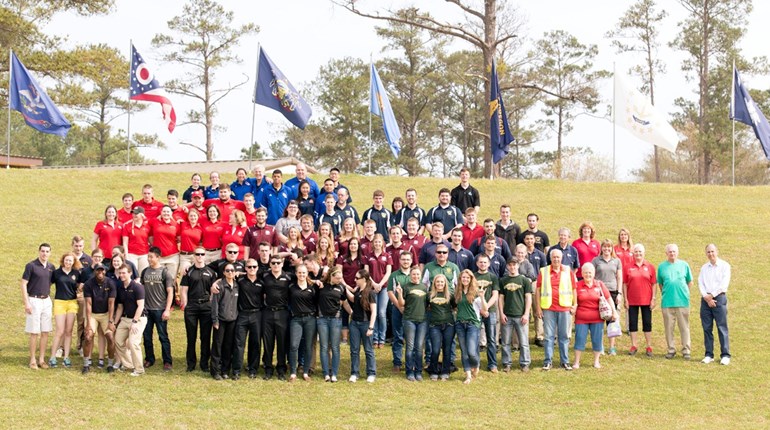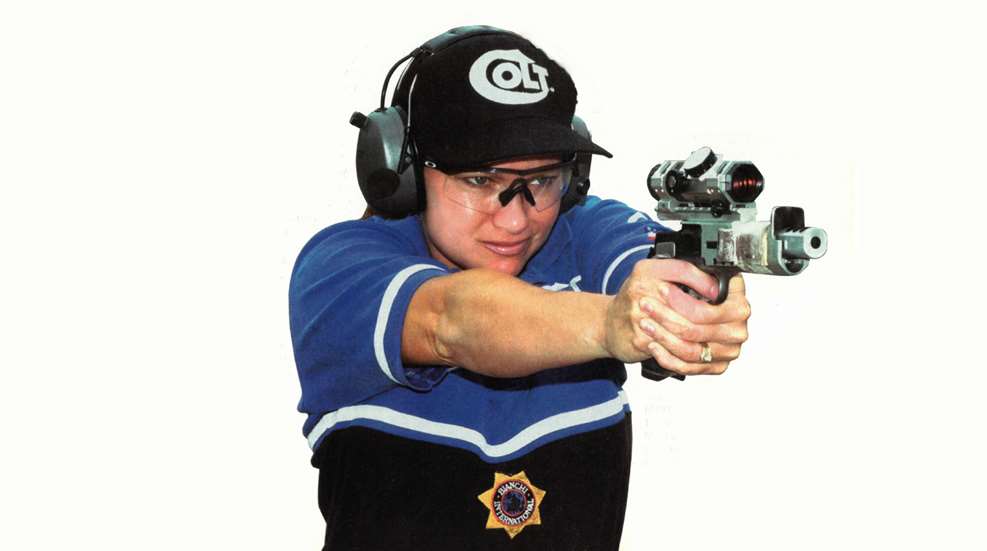
From the vault: A retrospective about the early history of the Bianchi Cup, the premier action pistol event that began in 1979. Below you can read Part 2 of the article, as it was published in the May 2003 issue of Shooting Sports USA. Additionally, be sure to read Part 1 of the Bianchi Cup 25-year retrospective here.
Bianchi Cup Reflections (Part 2)
By Joseph B. Roberts, Jr.
Remember 1985? It was the only year in which the Bianchi Cup course of fire was not the four matches devised by Ray Chapman. In 1985, the Practical Event was sidelined in favor of a 60-shot “International Rapid Fire Event.” The Rapid Fire Event included 12 strings of five shots each at a bank of five Bianchi silhouette targets, all from 25 yards. Four strings (20 shots) were fired in eight seconds each—four in six seconds each, and four in four seconds each. Rob Leatham won the International Speed Event that year with 596-33X and Tom Campbell took second at 594- 33X. The pair finished one and two in the championship, as well. But no one else did very well in Rapid Fire, and nobody particularly liked the course. The 60-shot International course is gone from the rulebook—replaced by a similar, 30-shot event—and it has never since been part of the championship.
How many of us remember Lemoine Wright, from Southlake, Texas? It was 1989, and when the smoke cleared from Match 3 on Friday, nobody seemed to have a winning score. All the heavy hitters were reported six or more points down. That’s when someone noticed Wright’s score—a 1914-152X—and learned it was at least one X higher than anyone else’s. Instantly a hero, it was, sadly, Wright’s 15 minutes of fame. A Bianchi competitor in 1987 and 1988, the 1989 champ returned in 1990 and has not been back since. This is not the only time a winner has gone unnoticed until the very last moment.
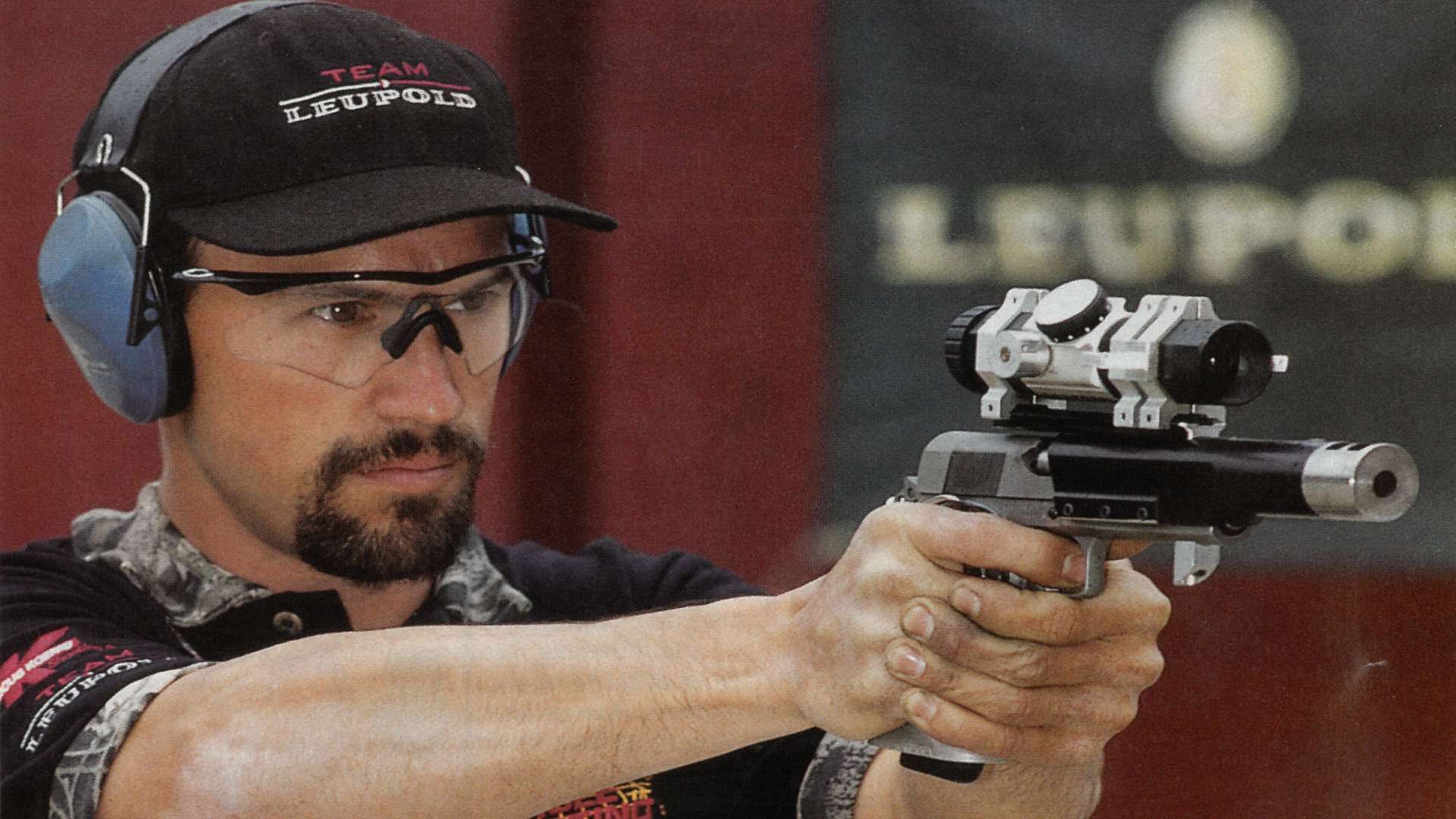
Consider Doug Koenig. In 1987 he shot his first Bianchi Cup tournament, as a protégé of gunbuilders Austin and Frank Behlert. He shot as a junior then and did well, winning the category. He came back in 1988 and, repeated his Junior Category win, but still gave no indication of what was to come. In 1989 Koenig’s ammunition failed to meet minimum performance standards and he was disqualified.
The next year, 1990, was all Koenig’s. In his first year in the adult ranks, and squadded well out of the so-called “Super-Squad,” Koenig shot the Practical Event on the first day of the tournament and both the Falling Plate and the Moving Target events on the second, and he shot clean scores on all three. Still, no one connected the dots. Then, with the likely candidates for victory dropping two points or more on the Mover, someone noticed Koenig had only the Barricade Event left to go and was doing it with a clean 1440-point aggregate for the matches he had fired. Koenig had quite a gallery as he stepped to the line for Match II, but he had the measure of the situation. Even then, Koenig possessed a tremendous capacity to concentrate on what he was doing and not be remotely concerned about outside influence or possibilities. He was also about to shoot his best event. And, he gave it his best shot—a 480 with 46 tie-breaking Xs. That put him in the clubhouse with a first-ever 1920-point aggregate with 157 Xs and the championship. It was the first of Koenig’s six Bianchi Cup victories, and established the previous year as the last time any shooter won the tournament with less than a perfect score.
We can’t reminisce about things without recollecting 1995. That was the year exhibition shooter and quick-draw expert Bob Munden entered the championship. True to his claim-to-fame, Munden shot the course with a Colt Single Action Army revolver. He did all right, but relearned what history’s gunfighters knew all along—that the Colt-style single-action is tops for a well-placed first shot, but because of its grip shape, is neither as speedy nor as accurate as a double-action on the follow-ups. Munden had little trouble meeting the time limits, but had considerable difficulty with the scoring rings. If he did not set the record books afire, he did wow the crowd with an impromptu demonstration of single-action shooting skill and expertise.
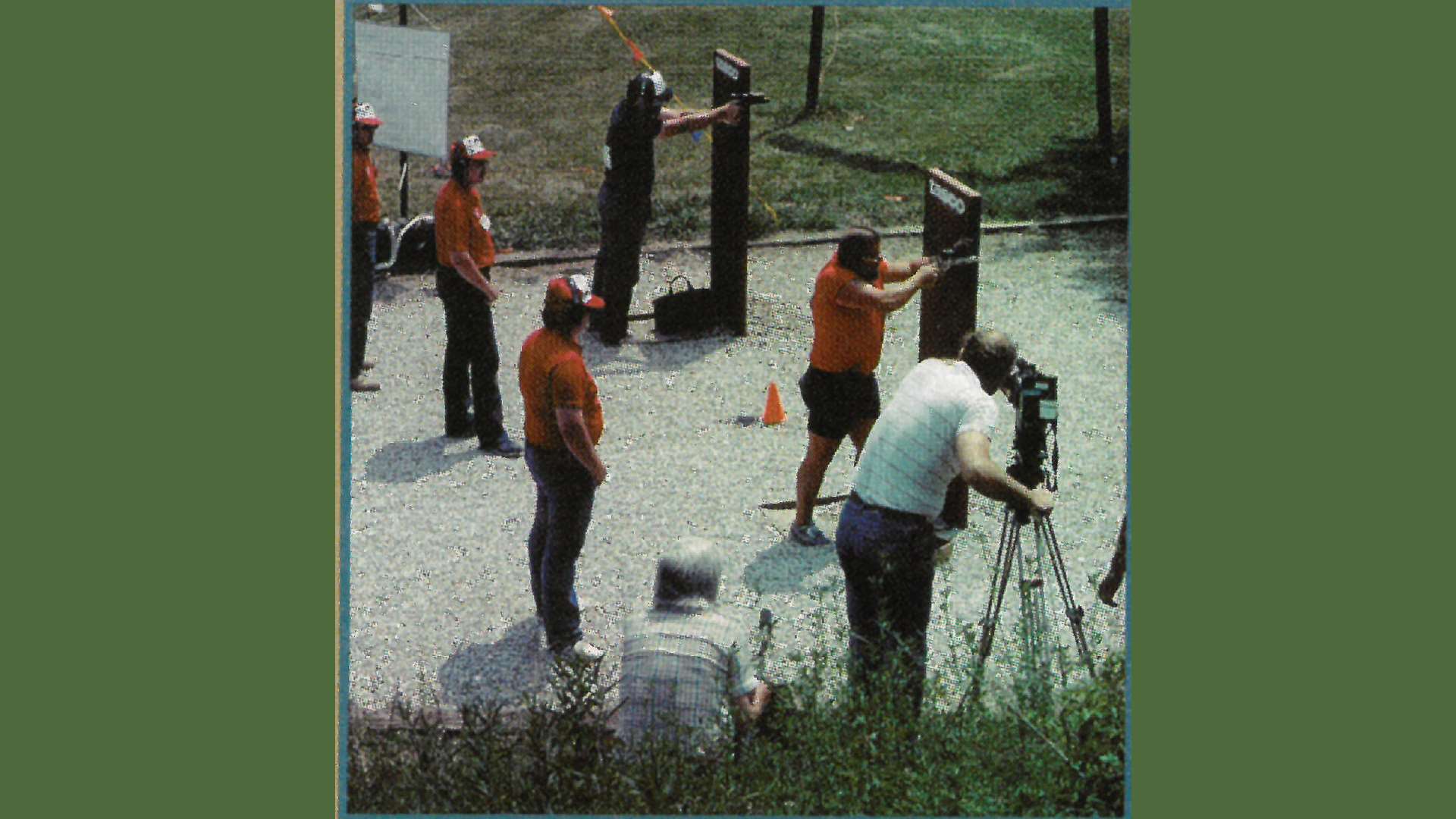
By the mid-1990s equipment—particularly firearms—had become so sophisticated that the NRA Action Shooting Committee decided to phase in a new championship, which has come to be known as the Stock Firearm Championship. The award was first made in 1994, as a category award, won that year by Bruce Gray, of Pipersville, Pennsylvania. By 1998, the category had developed into a full-blown national title and the first award went to Fred Craig of Geneseo, Kansas, with a score of 1863-127X. Since then, no single shooter has emerged to dominate the field, though 1985 Bianchi Cup champ Rob Leatham has won the Stock Gun Championship twice, first in 2000 and again in 2002.
The last half of the 1990s was tumultuous. Jim Davis, who pioneered NRA’s conduct of the championships, left NRA. Russ Stott took over in his stead, staying until the close of the 2002 season. Rudy Dufour, a retired Marine, and a shooting champion and record holder in his own right, took Stott’s place. And finally, Ray Chapman retired after the 1994 Bianchi Cup Action Pistol Tournament. Green Valley Gun Club, of Columbia, Missouri, purchased his training facility, reopened it as part of its ranges and conducted the 1995 tournament under the leadership of the current Match Director, Jim Hewins. Chapman, then still living in the Columbia area, served as 1995’s Match Director Emeritus.
Let’s talk about equipment, events and trends that I remember, and an anomaly or two.
Ron Lerch won the Bianchi Cup in 1979 using a Bo-Mar-sighted, long-slide .45, built by Jim Hoag. Mickey Fowler used similar equipment for his second-place finish.
In 1980, both men were back with the same pistols, but there were revolver shooters in the top finishers as well. David Bates, who took second in 1980, shot a Colt Python, fitted up by Reeves Junkind. Mike Murray, in third, shot a PPC-modified, heavy barrel Saith & Wesson, built for him by Ron Power. Tom Campbell had a Smith & Wesson Model 52, .38 Special, which had been worked over by the Smith & Wesson Custom Shop.
Fowler was a major contributor to early attempts to adapt guns especially for Bianchi Cup competition. In 1981, he was equipped with a Colt Mark IV, Series 70, extensively rebuilt by Charles Kelsey of Devel. Among several experimental modifications was a set of grip weights, steel plates that fit over the standard grip screw bushings and were held in place by the grips themselves. A year later, he won using a Don Nygord-built Colt .45 fitted with a combination muzzle counterweight and compensator. George Breskovich, of Advantage Competitive Accessories, who added the grip weights to Fowler’s 1982 gun, did the trigger work on his 1983 equipment.
Revolvers, meantime, emulated those used in PPC competition—heavy barrels, ribbed sights, and an extremely smooth double-action pull. After Enos’ win in 1983, electro-optical sights on revolvers became a sine qua non for victory. As well as sights, weight began to become a factor early on. In the early 1980s, gun builders increased the weight of pistols and of PPC revolver barrels, initially by going to larger-diameter barrels. The reason was to dampen the recoil of essentially full-power ammunition and thus reduce the time needed to recover and re-acquire the target in a rapid-fire string. Fowler’s pistols reached more than 50 ounces, empty.
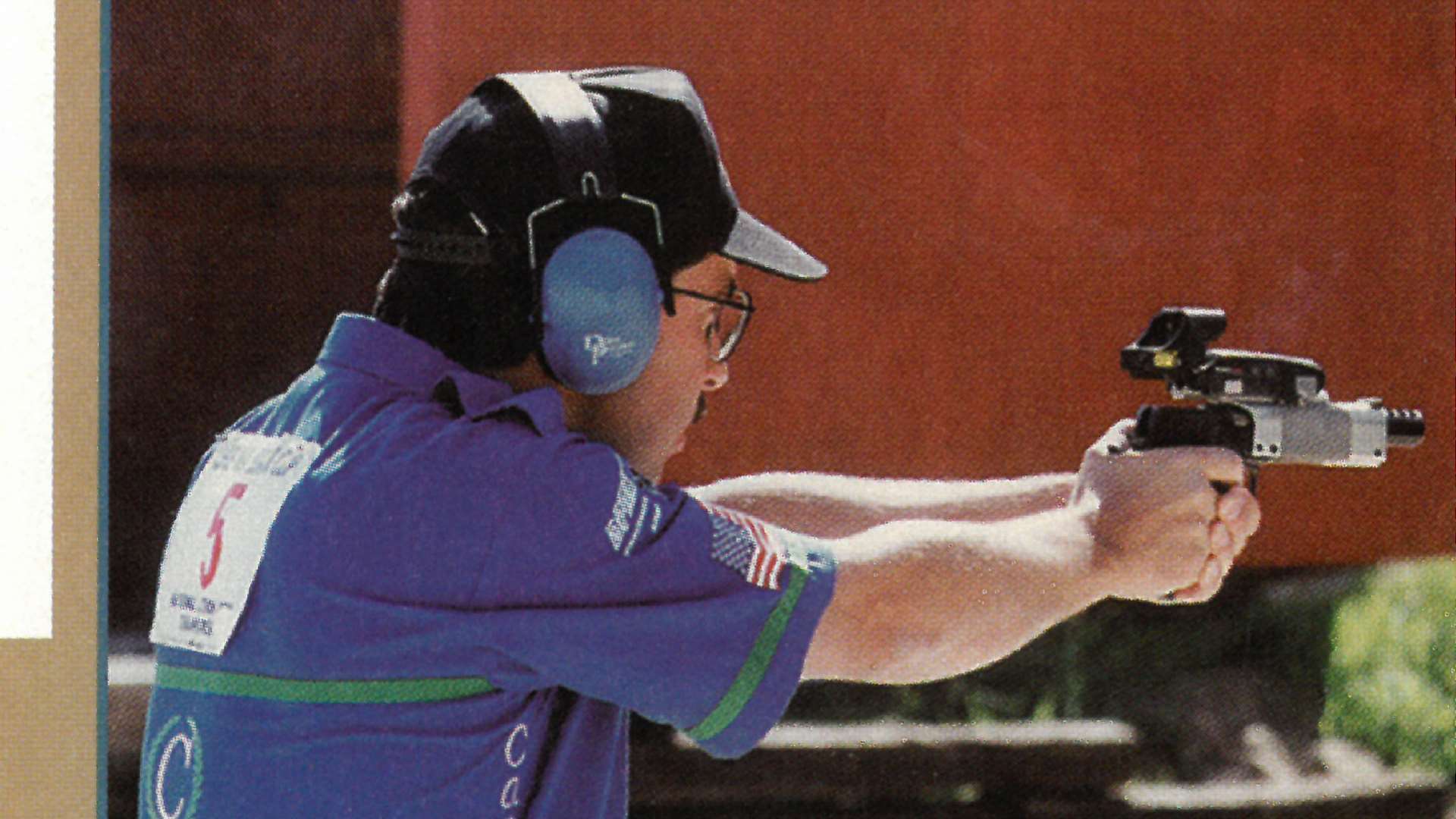
Revolver weight hit its limit about 1986, when gunsmith Greg Roberts, now the proprietor of Dayton-Traister in Oak Harbor, Washington, built John Pride an immensely heavy revolver that made a 4¼-pound Walker Colt seem like a featherweight. The intent was to subdue recoil entirely. It almost worked. Pride, already possessing tremendous upper-body strength, worked out hard to build himself up to shoot the behemoth. He was doing okay until on the Barricade Event. Pride put an added bit of “English” on the gun to swing it to the barricade, and in doing so, he lost control. The gun hit the barricade hard enough to knock the sight loose. Pride’s shot groups were typically small, but they were nowhere near the center of the target. Even at that, Pride did not give up the notion of using a heavier-than-normal revolver. The gun he used to win the 1987 championship was a Smith & Wesson L-frame with a counterweight on the barrel fitted by gunsmith Bill Jarvis that brought the gun’s total heft up to five pounds.
The pendulum began to reverse itself in the pistols-versus-revolvers arena in 1987 when Bill and Christie Rogers of Safariland, in Jacksonville, Fla., arrived with a pair of specially contrived Colt .38 Super pistols. The guns were sent to racecar builder George Heuning of Indianapolis, Indiana. Heuning devised a means of fitting the muzzles of the guns’ extra-length barrels with shrouds similar to those introduced by Riley Gilmore for use on revolvers. These shrouds would serve the same purpose: To hold the sight and to provide a place to grip the pistol in the Barricade Event. Gunsmith “Buzzy” Clifton modified the pistols’ slides and recoil spring mechanisms and installed the shrouds. And, the Rogers duo shot them in competition, clearing the way for pistol shooters to exert the same control over their barricade guns as did revolver shooters. Even then, it was 1992 before the swing carried a pistol shooter into the winners’ circle again. Koenig won his second Bianchi Cup using a Springfield Armory 1911-style pistol much-modified by George Heuning and chambered for the .38 Super.
And, I remember surprises, too. In 1989, when Yoko Shinomura won the Women’s category, she did not know until one of her teammates told her. The look on Shinomura’s face was priceless, and I got it on film. The other surprise was caught on videotape and aired as part of the Bianchi Cup coverage on “American Shooter.” It too was a women’s category winner: Vera Koo of Atherton, California. The issue of Koo’s victory has been settled for some time and Blain Seaboalt, of “American Shooter” asked me to go over and congratulate the new champ. I did. She didn’t know she had won. Her reaction, like Shinomura’s, was priceless—proving surprise, unlike lightning, may strike twice.
And there are two more competitors, in 25 years worth, who are hard to forget. They are the “May and December” of it all. In 1997, Chelsea Mukon and Frank Heredia showed up to shoot in the Bianchi Cup Tournament. Mukon was a rosy-cheeked, near-teenager from Marlboro, Connecticut. She entered the Bianchi Cup Tournament along with her dad, Mark. Chelsea had begun shooting as a way to spend time with her dad (or maybe it was the other way around). Pistol shooting was not her only endeavor, though. At the ripe old age of 12, she was a black belt in karate, an honor student, a Girl Scout and a softball player. At the tournament, she shot her way well into the lists, wielding her pink .38 Super Colt to a third-place finish in the Marksman class and into other shooters’ hearts as well.
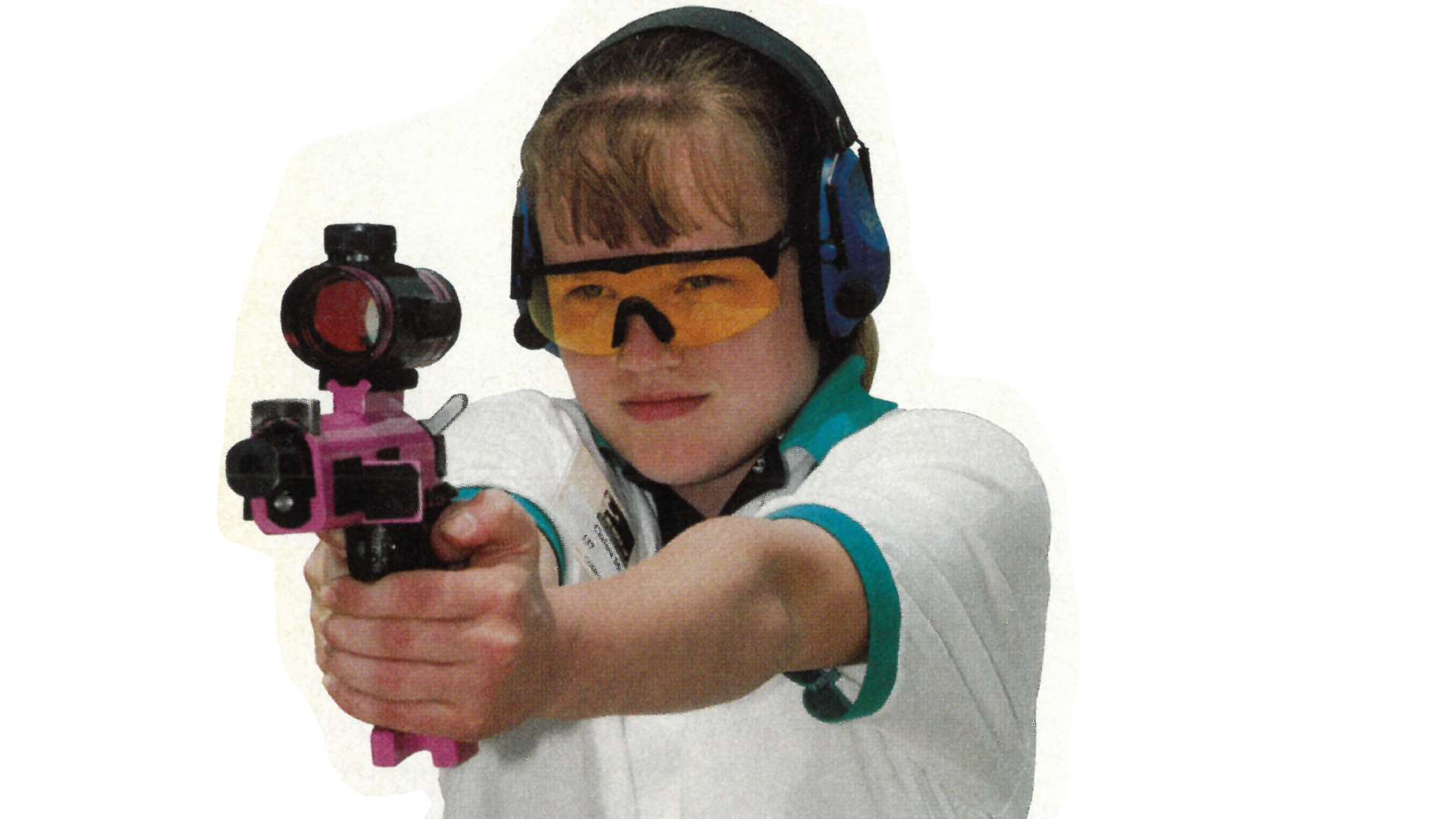
At the other end of the spectrum was Heredia, from Massepequa, New York. Heredia, who in his youth flew for the Royal Spanish Air Force in the Spanish Civil War of 1936-1939, began shooting at age 62 when he felt too old for scuba diving and sport parachuting. When he arrived at the Bianchi Cup, he was 20 years older—an incredibly youthful 82. Heredia, too, did well in his class finishing second as a Marksman. In an event that puts a reporter in contact with champions like Mickey Fowler, or Doug Koenig, or Bruce Piatt, or John Pride it is folks like Chelsea Mukon and Frank Heredia who make the Bianchi Cup memorable.
That is what one finds at the NRA Bianchi Cup National Action Shooting Championship, memories—a remarkable cross-section of pistol shooters representing all the corners of the globe. They are fierce competitors. They are innovators and experimenters. They are newcomers and veterans. They are young and old. They are ladies and gentlemen. They reflect all John E. Bianchi sought in the tournament he pioneered. They all embody the success of his undertaking. They represent all that is right and proud with the National Rifle Association.
Not long ago, John Bianchi and I reminisced a bit over the events of the past quarter-century.
“When I set out to establish the Bianchi Cup Tournament,” he said, “I wanted a prestigious contest, one that would attract the best people from a variety of pistol shooting disciplines.
“We all worked hard at the outset, and since, to make sure that what we got was what we wanted. The tournament has succeeded beyond my wildest dreams—has exceeded the highest of expectations. We have attracted, and continue to attract the top competitors, not just from the United States, but also from around the world. We continue to set the pace for similar contests worldwide.
“I’m proud to have founded the Bianchi Cup Tournament. I’m especially proud to have my name associated with it. It has stood the test of time.”
Here’s looking forward to Bianchi Cup Number 50!
Editor’s note: In May 2022, Benito Martinez won his first Bianchi Cup with a score of 1920-165X. Last year, with a score of 1920-182X, Doug Koenig won the Bianchi Cup for the 19th time—by far, the most Bianchi Cup titles for any competitive shooter in history. The tournament is still conducted at the Green Valley Rifle and Pistol Club in Hallsville, Missouri.














